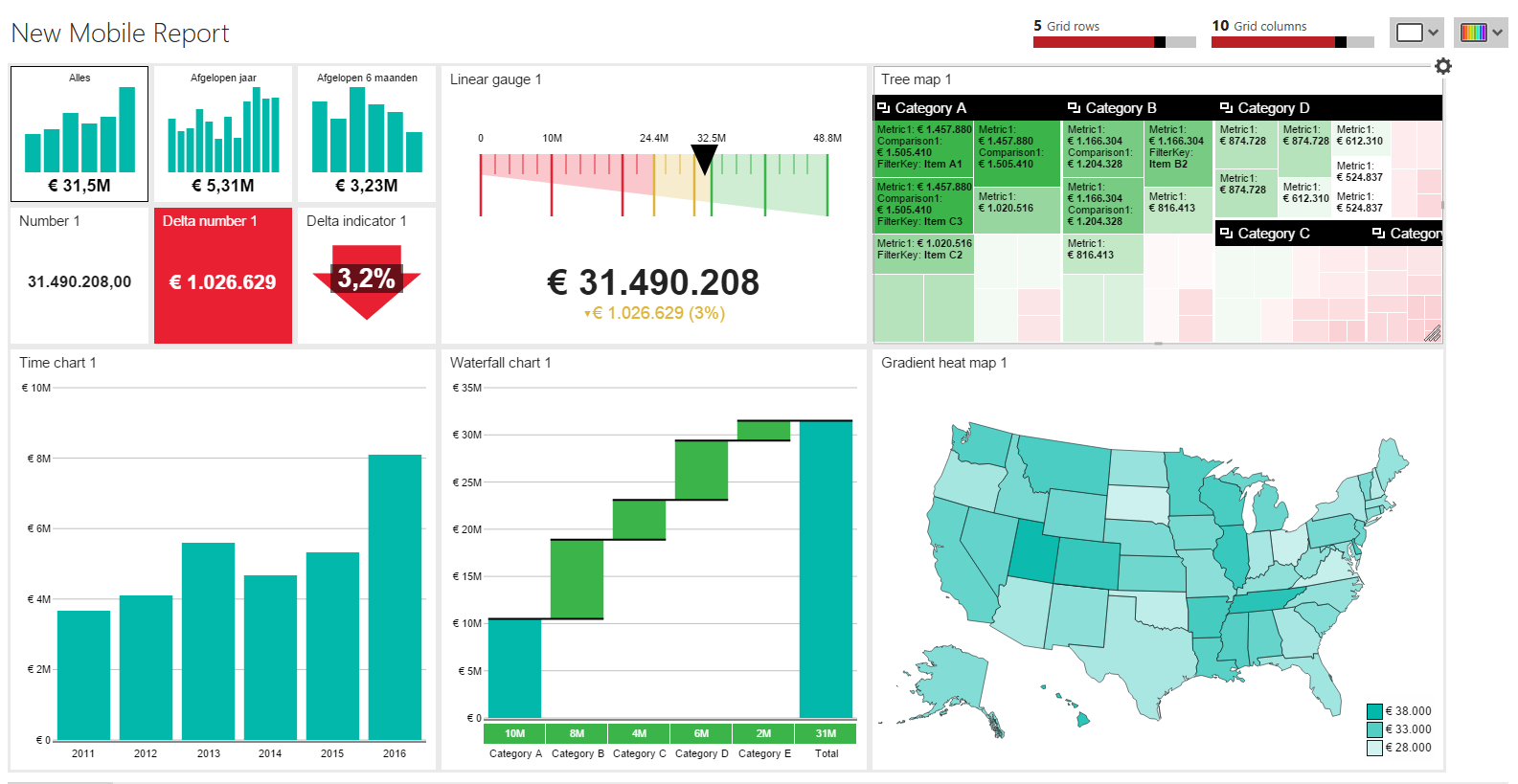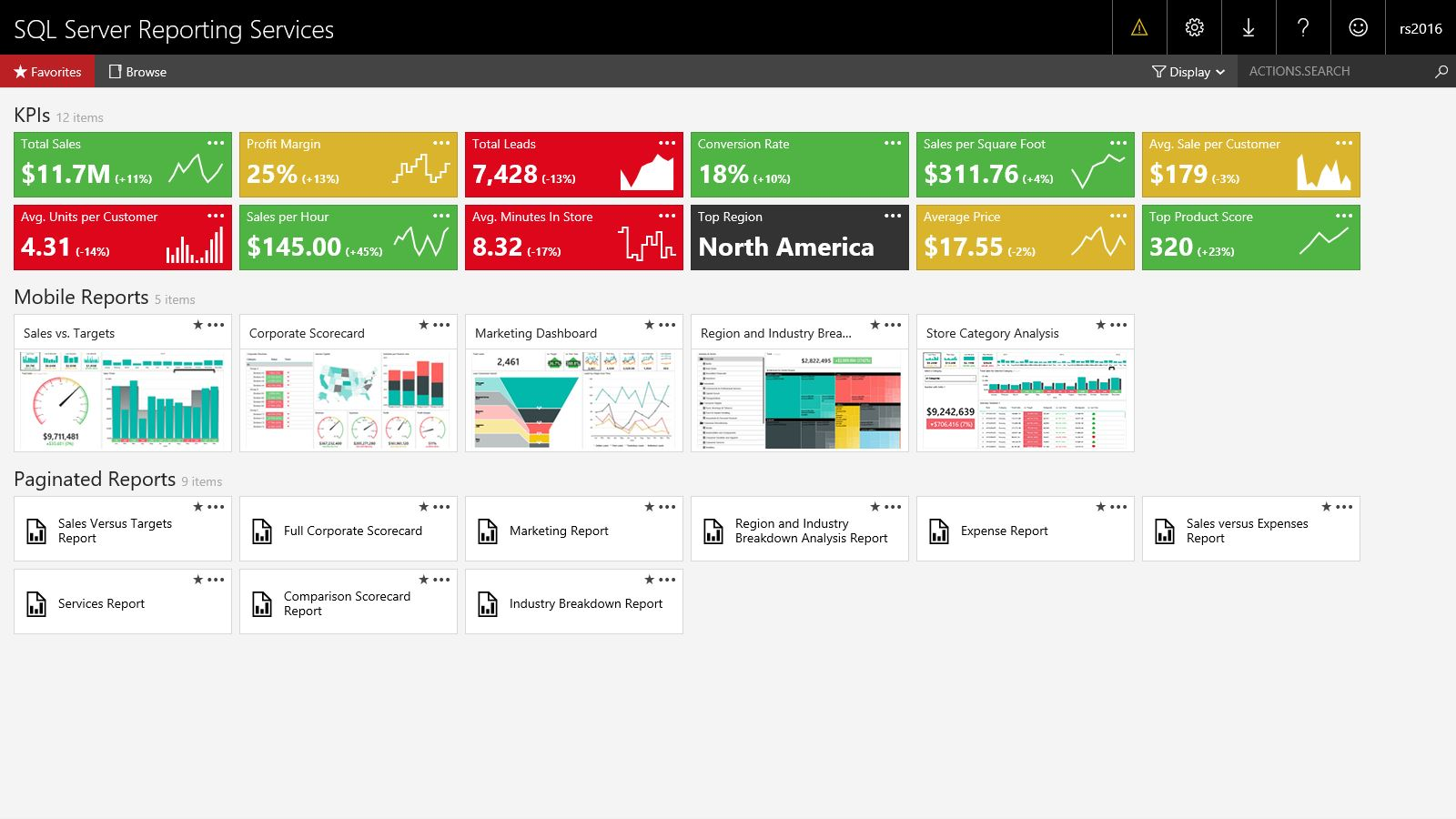The SQL Server 2016 release of Reporting Services is one of the biggest since its initial conception in 2004. Lets summarize:
- Report Builder has a new user interface, which looks more modern and up-to-date. Theres now also a parameter pane which gives you more control over how parameters are displayed.
- ActiveX has been removed for printing and replaced with a PDF based experience. This solves a lot of compatibility issues with most browsers.
Reporting Services now supports exports to PowerPoint. - A new rendering engine is created which uses HTML5. This is very important; as now most modern browsers (incl. mobile devices) will be able to support SSRS without any issues.
- Two new chart types are introduced: the treemap and the sunburst. Both are ideally suited to display hierarchical data. Most chart types now also have better defaults for their formatting.
- The introduction of mobile reports and KPIs. Microsoft has acquired Datazen, a company which built mobile dashboards on top of Analysis Services. This technology is now integrated into Reporting Services. Using the Mobile Report Publisher, you can easily create responsive mobile dashboards that can be displayed on any device.
- Report Manager (the online portal) has been completely rewritten to a new web portal. This portal supports traditional SSRS reports (called paginated reports) and the new mobile reports and KPIs. You can also upload Excel files and Power BI Desktop files. Currently you still have to edit them locally, but this might change in the feature. The Power BI native app (Windows Phone, Android and iOS) also supports reports uploaded to the web portal, which gives a streamlined mobile experience.
Its important to note that SSRS 2016 also supports SharePoint 2016. Currently you still need to integrate SSRS into SharePoint. However, soon Reporting Services reports will only need to be embedded into SharePoint (using iframes), which will make Business Intelligence solutions easier to set-up.
Contact us for more information on SQL Server 2016 Reporting Services !


